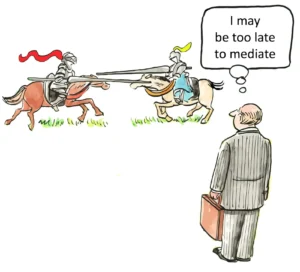The New Standard in Legal Translation: Why Human-in-the-Loop AI is Essential for Law Firms
The legal profession stands at a critical juncture where technological advancement meets professional responsibility. As law firms increasingly seek efficiency gains, the challenge of legal document translation presents a unique dilemma: how to harness the speed of artificial intelligence while maintaining the precision, confidentiality, and compliance that legal practice demands.
Recent industry analysis reveals that the machine translation market is projected to grow from USD 678 million in 2024 to USD 706 million in 2025, reaching nearly USD 995 million by 2032. Additionally, the translation industry’s value increased to $41.78 billion in 2024 and is expected to reach $49.02 billion by 2032. However, for legal professionals, the stakes are exponentially higher than in other industries. A single mistranslated term in a contract can shift liability, compromise agreements, or violate regulatory compliance, consequences that no law firm can afford.
The Critical Statistics: Why Generic AI Translation Fails Legal Standards
The legal translation landscape is characterized by sobering realities that underscore the inadequacy of standalone AI solutions. Research from multiple sources provides compelling data about AI translation limitations in professional contexts:
- Legal translation services market valued at $1.3 billion globally
- Translation accuracy rates vary significantly: Spanish translations achieve 94% accuracy, while Korean drops to 82.5%
- 80% of legal professionals anticipate high or transformational AI impact within five years
- 43% express concern about accuracy of AI outputs
- 37% worry about data security implications
- Legal mistranslations can result in $50,000-$500,000 in damages per incident
The gap between AI capabilities and legal requirements becomes even more pronounced when examining specialized legal terminology. Unlike general business documents, legal texts contain jurisdiction-specific concepts that often have no direct equivalent in other legal systems. Terms like “common law,” “due process,” or “fiduciary duty” carry precise meanings that vary dramatically across jurisdictions, making direct AI translation insufficient for professional use.
What Are the Unique Challenges of Legal Translation Today?
Legal translation presents a constellation of challenges that distinguish it from general business translation. The linguistic complexity alone is staggering, legal documents feature lengthy, complex sentences packed with specialized jargon where “omitting one comma can ruin the structure and meaning of a sentence completely.”
Jurisdictional Complexity
Legal systems worldwide operate on fundamentally different principles. Civil law systems, common law frameworks, and religious legal traditions each employ distinct conceptual structures. A contract clause that’s standard in New York may be meaningless or even illegal in Paris, requiring not just translation but legal adaptation.
Confidentiality Imperatives
Legal documents routinely contain privileged attorney-client communications, sensitive corporate information, and personal data protected under various privacy regulations. The use of public AI translation tools for such materials creates immediate compliance violations and ethical breaches under rules like ABA Rule 1.6, which mandates lawyers “make reasonable efforts to prevent inadvertent or unauthorized disclosure” of client information.
Forum Insights: What Legal Professionals Are Saying
Discussion forums across the legal and translation communities reveal the real-world challenges practitioners face. On Reddit’s legal professional communities, including r/TranslationStudies, translators express concerns about maintaining quality while integrating AI tools. As documented in recent discussions, legal professionals are actively seeking solutions that balance efficiency with professional responsibility.
The translation community discussions reveal a palpable tension surrounding AI adoption. While some posts express frustration about job stability due to AI’s rise, others focus on practical challenges like the need for specialized proofreading and secure file handling protocols. This highlights that the core issue isn’t a simple “human vs. machine” debate—it’s about strategic integration.
Is Speed Worth the Risk for Your Legal Documents?
The allure of instant AI translation is undeniable, but the risks for legal documents are catastrophic. Pure machine translation struggles with the nuanced terminology that defines legal relationships. A mistranslated liability clause can shift millions of dollars in exposure. An incorrectly rendered compliance provision can trigger regulatory penalties.
Real-world examples illustrate these dangers:
- A pharmaceutical company faced $2.3 million in regulatory fines due to mistranslated clinical trial documents
- A multinational corporation’s merger nearly collapsed when AI translation incorrectly rendered a key indemnification clause
- A law firm faced malpractice claims after client data was compromised through unsecured public translation tools
The legal community’s forum discussions reveal practitioners grappling with these tensions. Many express frustration with AI tools that produce grammatically correct but legally inaccurate translations, while others worry about the professional liability implications of using unvetted translation services.
As Ofer Tirosh, CEO of Tomedes, explains on his LinkedIn post:
“For years, I watched businesses struggle with translation—not because they didn’t care, but because the tools available simply weren’t built for them. They offered single outputs, with no room for nuance, no context for tone or terminology, and little regard for how businesses actually operate, with complex files, strict privacy requirements, and the expectation that things just work. We saw that gap, and we set out to close it.”
What Is “Human-in-the-Loop” (HITL) and How Does It Work?
The Human-in-the-Loop (HITL) model represents the evolution of legal translation technology. This approach combines AI efficiency with human expertise, creating a workflow that delivers both speed and accuracy.
The HITL Process
- AI Initial Translation:
Advanced neural machine translation engines process the document, generating multiple translation options
- Quality Assessment:
AI systems analyze the output for consistency, terminology accuracy, and potential issues
- Human Review:
Professional legal translators review and refine the AI output, focusing on legal terminology, cultural nuances, and jurisdictional requirements
- Final Validation:
A second human expert validates the translation for accuracy and legal compliance
This hybrid approach achieves remarkable results. Studies indicate that HITL translation can reduce translation time by 63% while maintaining superior accuracy compared to AI-only solutions. The model also reduces keystrokes by 59% compared to translating from scratch, significantly improving efficiency without sacrificing quality. According to Tomedes research, Machine Translation Post-Editing (MTPE) offers a 30-50% cost reduction while maintaining professional standards.
As the National Center for State Courts notes: “This ‘human in the loop’ approach ensures accuracy and accountability and addresses the nuances that AI might miss in legal and non-English contexts.”
How Does HITL Address Data Security, Compliance, and Liability?
The Human in the loop model directly confronts the three primary concerns of legal professionals: data security, regulatory compliance, and professional liability.
Data Security Protocols
Professional HITL services implement enterprise-grade security measures including:
- End-to-end encryption for all document transfers
- ISO 27001 certified data handling procedures
- Segregated processing environments with no data retention
- Comprehensive non-disclosure agreements with all human reviewers
Compliance Framework
HITL services designed for legal use incorporate compliance protocols addressing:
- GDPR requirements for EU-related documents
- HIPAA protections for healthcare-related legal materials
- SOX compliance for financial documentation
- Industry-specific regulatory requirements
Liability Mitigation
The structured HITL approach creates audit trails and quality assurance measures that support professional liability defense:
- Documented review processes with identified human reviewers
- Quality scores and confidence ratings for translation accuracy
- Version control and change tracking for all modifications
- Professional indemnity insurance coverage for translation errors
Best Practices for Law Firms: Implementing a Secure HITL Workflow
Successful HITL implementation requires strategic planning and careful vendor selection. Law firms should prioritize providers that understand legal industry requirements and demonstrate a clear commitment to security and accuracy.
Vendor Selection Criteria
- Security Certifications: Look for ISO 27001, SOC 2, and industry-specific compliance certifications.
- Legal Expertise: Ensure translators have legal training and specialization in relevant practice areas.
- Technology Integration: Seek platforms that integrate seamlessly with existing document management systems.
- Quality Assurance: Demand transparent quality metrics and revision tracking.
- Professional Liability Coverage: Verify adequate insurance coverage for translation errors.
Law firms should favor platforms that not only meet these criteria but also offer proven HITL workflows supported by secure, AI-driven customization. For example, AI translation tool like MachineTranslation.com combines best-in-class AI from multiple translation engines with optional Human Verification, ensuring 100% accuracy when required. Its AI Translation Agent offers context-aware refinement and remembers user preferences, ideal for handling sensitive legal terminology and client confidentiality.
Implementation Strategy
- Start with a Pilot Program: Use low-risk documents to test service quality and workflow integration.
- Provide Staff Training: Educate team members on proper document preparation and review procedures.
- Define Quality Benchmarks: Set clear accuracy thresholds and turnaround time expectations.
- Conduct Compliance Monitoring: Perform regular audits to ensure ongoing adherence to security and confidentiality standards.
- Leverage Platform Features: Use tools like Anonymize Text and Secure Mode on MachineTranslation.com to protect client data and comply with data handling regulations such as GDPR or HIPAA.
The Human-AI Partnership in Legal Translation
The future of legal translation depends on strategic collaboration between humans and AI—not replacement. While AI offers unprecedented speed and cost efficiency, human expertise ensures accuracy, ethical responsibility, and compliance.
The Human-in-the-Loop model provides the optimal balance, leveraging AI capabilities while maintaining professional judgment and quality control. An AI translation tool, such as MachineTranslation.com, exemplifies this balance. Its Human Verification service allows legal teams to refine AI-generated drafts to meet publication or filing standards, while features like Key Term Translations and Segmented Bilingual View enable clear, clause-by-clause legal QA.
As the legal industry continues its digital transformation, the key question is not whether to adopt AI translation technology, but how to implement it responsibly. The HITL approach, anchored by secure, specialized platforms, offers that framework, ensuring technological progress supports the profession’s highest standards of accuracy, confidentiality, and client service.
The time for observation has passed. Law firms ready to scale securely and globally must act now, evaluating HITL solutions that are built for confidentiality, legal precision, and operational efficiency.
Can AI Translation Meet Legal Industry Standards for Accuracy?
The question isn’t whether AI can achieve legal translation standards, it’s whether AI alone is sufficient. Current research demonstrates varying accuracy rates across languages and contexts. According to translation industry statistics, Spanish translations achieve 94% accuracy, while other languages like Korean reach 82.5%. However, HITL approaches that combine AI efficiency with human oversight consistently achieve accuracy rates exceeding 95%.
The legal industry’s unique requirements demand this hybrid approach:
- Terminology Precision:
Legal terms carry specific meanings that vary by jurisdiction
- Contextual Understanding:
Contracts and regulations must be interpreted within specific legal frameworks
- Cultural Sensitivity:
International legal documents must account for different legal traditions
- Regulatory Compliance:
Translations must meet industry-specific accuracy standards
Industry predictions indicate that Machine Translation Post-Editing (MTPE) is experiencing significant growth, offering cost reductions of 30-50% while maintaining professional quality standards.
Why Is Human Oversight Still Critical in Legal Translation?
Despite remarkable advances in AI translation technology, human oversight remains indispensable for legal documents. The reasons extend beyond accuracy to encompass professional responsibility, ethical obligations, and risk management.
Professional Liability Considerations
Legal professionals bear ultimate responsibility for document accuracy. Courts don’t accept “AI error” as a defense for mistranslated legal documents. Human oversight provides the professional judgment necessary to:
- Identify culturally sensitive terminology
- Recognize jurisdiction-specific legal concepts
- Ensure consistency with established legal precedents
- Maintain attorney-client privilege throughout the translation process
Ethical Obligations
Professional ethics rules require lawyers to maintain competence and protect client confidentiality. These obligations extend to translation services, requiring human judgment to:
- Evaluate translator qualifications and specialization
- Ensure appropriate confidentiality protections
- Verify accuracy of legally significant terminology
- Maintain quality control over work product
The Strategic Imperative: Why Law Firms Cannot Afford to Wait
The convergence of technological capability and market pressure creates an urgent strategic imperative for law firms. The AI software market is projected to reach $126 billion in 2025 and exceed $1.3 trillion by 2029, with language translation remaining a key component of this growth.
Law firms that delay HITL adoption risk competitive disadvantage in several areas:
Client Expectations
Modern corporate clients expect rapid turnaround on international transactions and cross-border litigation. Firms unable to provide efficient, accurate translation services risk losing clients to competitors who can deliver faster results without compromising quality.
Cost Management
Traditional human-only translation services cost significantly more per word and require longer turnaround times.
Risk Mitigation
As international legal work becomes increasingly common, translation accuracy becomes a significant malpractice risk. HITL services provide documentation, quality assurance, and professional oversight that supports liability defense. The global legal translation services market is projected to grow from $6.8 billion in 2024 to $10.2 billion by 2033, reflecting increased demand for specialized services.
Future-Proofing Legal Translation: What’s Next for the Industry
The legal translation landscape will continue evolving rapidly. Current industry analysis predicts that by the end of 2025, 35% of AI-driven speech translation tools will integrate generalist models, up from approximately 20% in 2024. For legal applications, this evolution will continue requiring human expertise for the foreseeable future.
Emerging trends include:
- Specialized Legal AI Models: Translation engines trained specifically on legal corpora
- Real-Time Translation Integration: Live translation capabilities for video conferencing and depositions
- Blockchain Verification: Immutable records of translation accuracy and reviewer qualifications
- Regulatory Technology Integration: Automated compliance checking for translated documents
As the translation industry continues growing with a projected value of $49.02 billion by 2032, legal translation will remain a specialized segment requiring hybrid human-AI approaches.
Conclusion: The Human-AI Partnership in Legal Translation
The evidence overwhelmingly supports a clear conclusion: the future of legal translation lies in strategic human-AI collaboration, not replacement. While AI provides unprecedented speed and cost efficiency, human expertise remains essential for accuracy, compliance, and professional responsibility.
The Human-in-the-Loop model offers law firms the optimal balance—harnessing AI capabilities while maintaining the professional judgment, ethical compliance, and quality assurance that legal practice demands. Firms that implement HITL solutions strategically will gain competitive advantages in international markets while managing the risks that pure AI solutions cannot address.
As the legal industry continues its digital transformation, the question isn’t whether to adopt AI translation technology, but how to implement it responsibly. The HITL approach provides the framework for that responsible adoption, ensuring that technological advancement serves the profession’s highest standards of accuracy, confidentiality, and client service.
The time for cautious observation has passed. Law firms must now actively evaluate and implement HITL translation solutions to remain competitive in an increasingly international legal marketplace while maintaining the professional standards that define the legal profession.


















